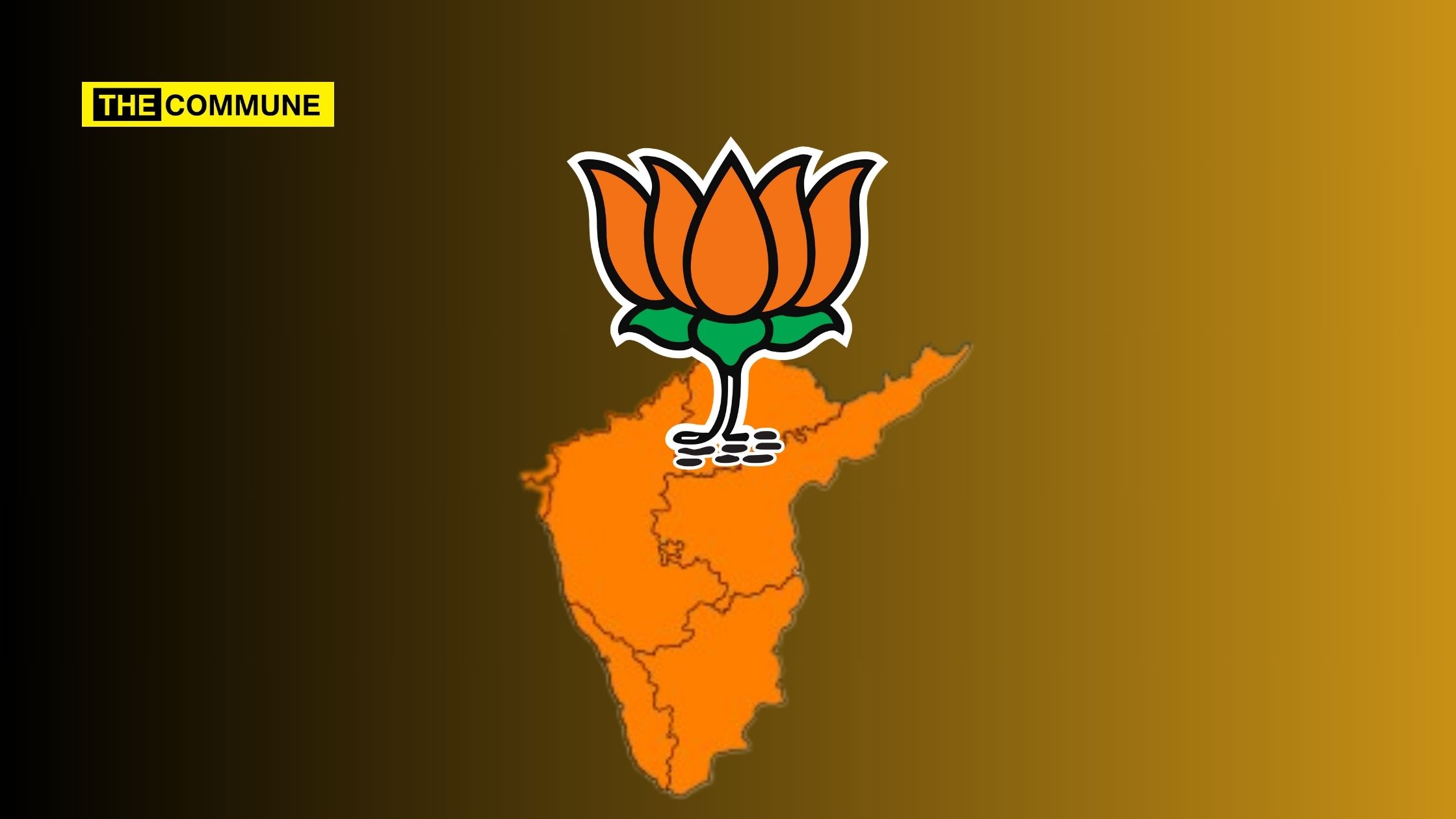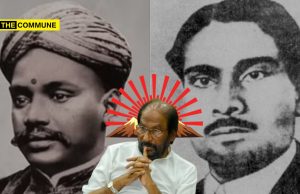
With Telangana’s Assembly Election date nearing, a national party like the BJP, hoping to make inroads into the Southern states, has much to think about. A stark fact that the BJP must ponder over, is its predicament of not being in power, in a single South Indian state, at this moment in time.
Earlier this year in May, it lost the one southern state it had once managed to hold sway over – Karnataka. Many analysts have opined that the glaring reason for the BJP’s loss in Karnataka’s most recent election, was a weak state leadership coupled with warring factions within the party.
It had made a notable entry into Andhra and Telangana state politics back in 2014, after the division of the larger Andhra Pradesh into two smaller Telugu states. It presented itself on its own merit to the people of both states, quickly gained a small fan base and picked up pace for steady growth in both states, resulting in an increased vote share in the post 2014 bifurcation period.
However, it lost most of its gains in Andhra after its previous ally, the TDP lost the 2019 elections, partly blaming its electoral loss on the BJP’s alleged non-cooperation on important state-specific issues, such as the denial of additional central funds for developing a new state capital. That aside, many of the seasoned politicians in the state agreed that a negative, contributing factor to the party’s decline in Andhra, was the lack of strong state-level leadership, leading to miscommunication and misunderstanding between the BJP and the state’s senior politicians from regional parties. Although the central BJP receives external support from the current YSRCP government in Andhra Pradesh, its state leadership and structure, continues to be a weak one, unable to hold its own weight with any party in the state and grow its base.
The BJP’s momentum has lasted somewhat longer in neighboring Telangana. The party continued to gain in both vote share and positive publicity, all the way up to early 2023. However, it began to experience a rather rapid loss of energy and motivation, soon after its popular state-leader, Mr Bandi Sanjay Kumar was transferred from his state-leadership post to a national one. Reasons for the transfer of the popular state leader and the BJP’s rationale in moving Bandi Sanjay out of his critical role, just before Telangana state elections, are still unclear. Many suspect, reasons such as his leadership style or the current caste equations in the state’s unit along with in-fighting.
In Kerala, the BJP continues its existential struggle in a state obsessed with its own version of communism and marxism. In Tamil Nadu, it has finally managed to strike gold with its state leader, the talented ex IPS Officer, Mr K Annamalai, who has almost single handedly managed to generate sufficient interest and curiosity among the people of the linguistically and culturally proud state of Tamil Nadu, which fiercely guards its ancient and unique social systems within the larger national context.
However, the next Tamil Nadu state election is more than two years away, before the BJP and Annamalai are able to prove their mettle in a state, dominated by the distinctly Dravidian-ideology driven parties of DMK and AIADMK.
The BJP’s supporters in the southern states wish it success in the South. Perhaps this is a good time for the BJP to do some serious soul-searching? The party has lost Karnataka. Its chances are slim in the upcoming Telangana and Andhra elections. It has a long way to go, in a complex state like Kerala, in spite of the encouraging progress made over the last five years. It’s best bet for the near future, appears to be Tamil Nadu, with a cautiously optimistic chance of appealing to the Tamil people, on the planks of both national and state pride as well as showcasing its ability to synchronize its ambitious national goals with relatable, relevant regional goals.
Overall, the South presents a bleak picture right now for the BJP. A strong theory for its below-par performance in the Southern states is, arguably a combination of three factors:
– Clarity about its ambitions in the south
– Judgment with the selection of ideologically strong, local leaders
– Centralized decision-making
A national party that hopes to win in the South, must get the above factors right, in order to gain a foot hold in any of the southern states and expand its base in a steady, consistent manner with reduced instances of major upheavals or disruptions. A deeper look at the above mentioned factors:
1) The party must be highly sensitive to the linguistic and cultural regional differences between the North, West, South, East of the country and the differences in caste equations within each state, coupled with factors of religion and economics, that differ from state to state and often times, even within the districts of the same state.
Political parties and leaders that aim at long-term survival, relevance and consistent success must understand this reality. It is important, even critical, to pay attention to local factors. Go hyper local! What works in Delhi will not work in Kolkata, what works in Mumbai will not work in Chennai and what works in UP will not work in Andhra or Telangana. Specifically in Andhra and Telangana, the financially savvy, politically dominant, upper caste factor versus numerically larger backward caste equations are vastly different than that of the other states that the BJP’s central leadership is used to dealing with.
2) Pick strong local leaders, train them, place your trust in them and give them time-bound goals that are measurable. Give them a reasonable period of time to prove themselves before caving in to opposing voices and interfering in an already invested process that requires ample time to be given to the selected candidate.
The BJP should caution itself against repeating the mistakes of the Congress which didn’t sufficiently appreciate true-blue local talent, instead, choosing to take the easier but riskier path of listening to hotshot “central” leaders who were not always in touch with the ground realities in certain states and districts.
Allowing and even encouraging strong, confident local leaders to grow and prove themselves in their own right, combined with a policy for central-leadership to interfere ONLY when absolutely necessary will keep a healthy “federal” structure of the party intact, ensuring a steady stream of presently impactful local leaders as well as a steady, seamless development of the next-in-line future leaders for the party.
Strong, regional leaders are not to be wary of or suspicious of! They are the back bone of a confident, successful party. They are a huge asset to the party that can be called upon and utilized in times of uncertainty and trouble-shooting. Strong leaders are by nature, confident in their abilities and prove themselves with very little guidance or training. In return, strong leaders expect to be heard and respected.
They are an undeniable, reliable, all-weather asset to any party with one important caveat – they must thoroughly believe in the party’s core ideology and its principles and pledge an allegiance to it. If the BJP’s central leadership is assured of a regional, up-and-coming leader’s belief in and allegiance to the BJP’s ideology, core values, national and regional goals… the party should not shy away from offering its support to the leader’s natural talent. Being suspicious of strong individuals or not throwing its weight behind popular local leaders, will quickly result in the party drastically losing its winnability in a state. If the party chooses to stifle the voice and political abilities of talented, regional leaders, it risks losing the support of the local “masses” who are likely to be more influenced by their local leaders rather than central leaders.
Let’s pause and think for a moment – where would the party be today, if the BJP’s central leadership in the 90s had successfully managed to obliterate strong, state-level leaders like Gujarat’s Narendra Modi and Amit Shah, UP’s Yogi Adityanath, Goa’s Manohar Parrikar and MP’s Shivraj Singh Chauhan?
3) Too much centralized decision-making can lead a party to over-dependence on a handful of powerful, who may not be around forever in the ever-changing, highly volatile world of politics where “change is the only constant”.
The policy-making, by its very nature, may lend itself to a centralized process, but the decision-making at the state level for the implementation of the party’s policies, should be de-centralized and handed over to regional leaders who understand the local circumstances better.
Too much centralization & dependence on just a handful of current heroes or trouble-shooters, also leads to choking and disabling a healthy federalist structure, where the powers for decision-making and policy implementation are ideally meant to be a shared responsibility and task in varying degrees, between the head quarters and its nodal centres.
A lack of adequate and appropriate de-centralization in areas of 1) Generating new ideas 2) Input into policy-making 3) Suggestions for policy-implementation, is likely to result in a denial of equal opportunities to all other, second-tier, highly capable regional leaders and potential future talent, eventually leading to a trust and opportunity deficit within the party, an unfavourable reputation outside the party and an erosion of the common values and principles of the party that attracted new members to it, in the first place.
There is hope yet. Eager supporters of the BJP are relieved to note that the party appears to have got all of the above-stated factors right, in Tamil Nadu, under the leadership of a young, fearless, K Annamalai, who takes his inspiration from senior, central leaders like Mr. Modi and Amit Shah:
– The party studied, understood and acknowledged regional differences and cultural sensitivities. It has made an effort to understand matters of local significance (what matters for the Tamil people vs. people of another state).
– The party is resisting the urge to undertake centralized decision-making in matters of local importance and pride. It is leaving state-matters to its trusted regional lieutenant and his team, allowing the party’s state leaders and cadre to grow from experience and identify the next level of players / future leaders.
– It picked the right kind of leader for this state. It is also giving him ample time and necessary support to prove himself rather than allowing itself the temptation to intervene too quickly which would otherwise lead to an erosion of confidence, trust and credibility for Annamalai.
The key being let the selected candidate prove his/her unwavering allegiance to the party’s ideology, allow them to grow, win and contribute to the party, with the assumption that all other “matters” can be settled through dialogue and debate eventually.
If strong, vocal, oratorically gifted, politically savvy leaders are not allowed to express themselves and grow based on preemptive assumptions or suspicions of arrogance, rebelliousness, perception of disrespect to authority etc, a political party loses its most precious requirement and asset – talented future leaders.
This seems to be the very thing that happened in the Telugu states – regional caste equations, playing it safe in the selection of financially strong but politically ineffective “mass” leaders as well as excessive centralized decision making, in circumstances where local leaders should have been put in charge of making important, local decisions.
The key to cracking south is a strong local face. BJP can learn from itself by understanding what it got right in Karnataka with Yediyurappa and what it is doing right in Tamil Nadu with a young blood like Annamalai – invest in a strong local leader and groom him/her to become big. Tamil Nadu can emerge as BJP’s growth model for the entire south.
Shivani is a freelance writer based out of Vijayawada.




